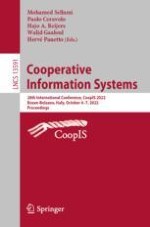This volume LNCS 13591 constitutes the proceedings of the International Conference on Cooperative Information Systems, CoopIS 2022, collocated with the Enterprise Design, Operations and Computing conference, EDOC 2022, in October 2022 in Bozen-Bolzano, Italy.
The 15 regular papers presented together with 5 research in progress papers were carefully reviewed and selected from 68 submissions. The conference focuses on technical, economical, and societal aspects of distributed information systems at scale. As said, this 28th edition was collocated with the 26th edition of the Enterprise Design, Operations and Computing conference, EDOC 2022, and its guiding theme was "Information Systems in a Digital World“.
